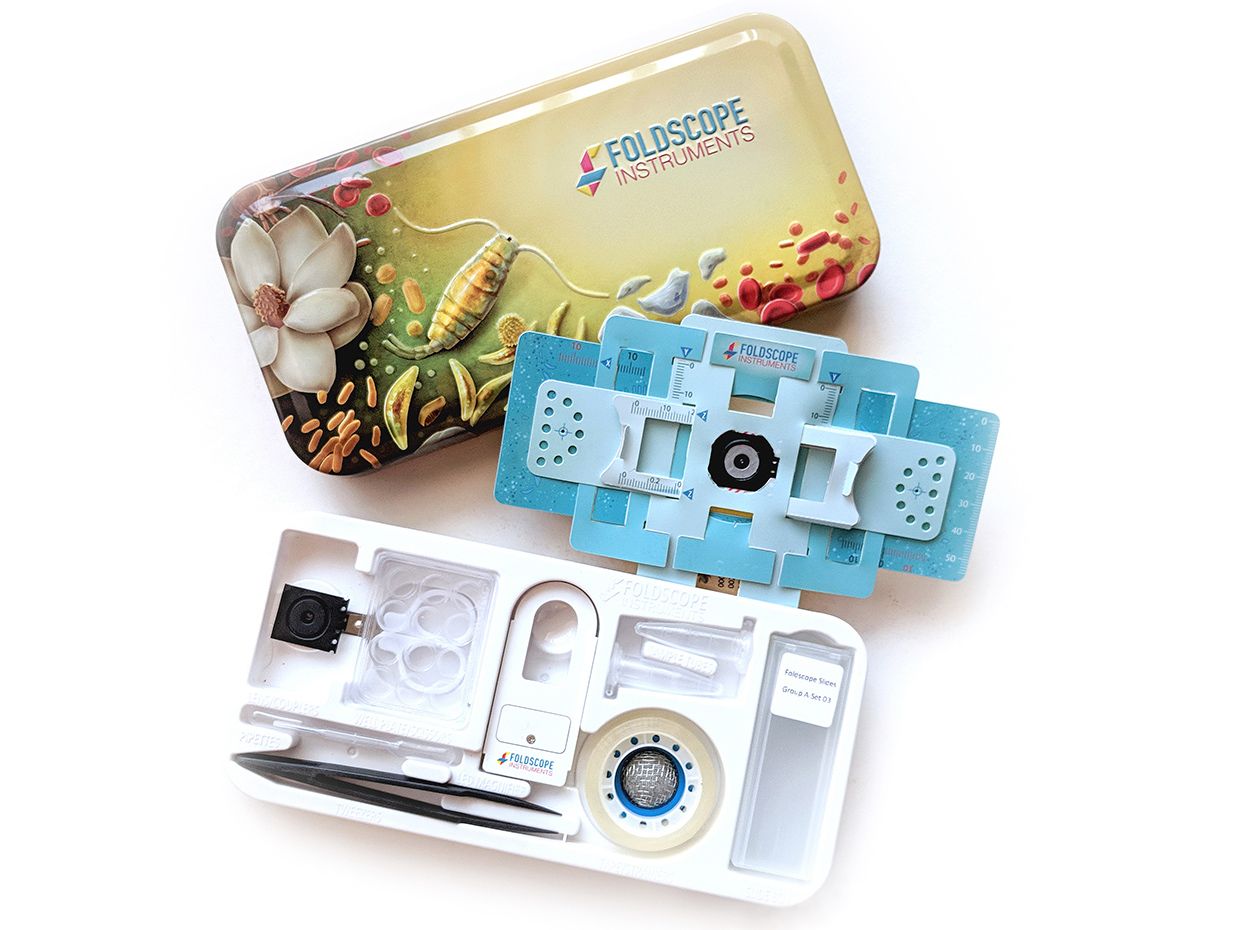Foldscope: A Paper Microscope You Can Attach to Your Smartphone
Origami-inspired microscopes cheap enough for every student
The basic tabletop microscope hasn’t changed much in fundamental design in nearly 100 years. At least its design hadn’t changed until a Stanford engineer started playing with innovative microscopy ideas in 2011.
Thanks to Manu Prakash, an assistant professor of bioengineering at Stanford University, in California, there are now more than a half-million “Foldscopes” out in the world. The Foldscope uses origami to make a stable cardboard microscope body and precision-manufactured glass beads for a lens. Drawing inspiration from DNA-folding studies, space telescope design, and much more, Prakash says he’s able to achieve optical alignments in this folded-cardboard device of as little as 20 micrometers. With such clever design hacks, the cost of the parts needed to make one Foldscope is now less than one U.S. dollar. And instead of an eyepiece, you can use your smartphone’s camera, which can be magnetically docked to the Foldscope thanks to adhesive magnets.
Prakash is also the designer of a 20-cent whirligig biomedical centrifuge, made only of paper and string, that separates pure plasma from whole blood in under 1.5 minutes and separates malaria parasites in under 15 minutes. This “Paperfuge” has applications in both field work and developing countries.
Prakash first conceived of Foldscope in 2011 while traveling in Thailand. Foldscope is now backed by a startup company, Foldscope Instruments of Palo Alto, Calif. Prakash and his former graduate student Jim Cybulski are the cofounders, and they’ve set a goal of distributing a million Foldscopes by the end of 2018. As of October, the company had shipped 510,000, according to Prakash. He says he designed the Foldscope “to make the world a more curious place.”
Foldscope’s online community, Microcosmos, is a meeting place for Foldscope novices and Foldscope veterans around the world to share tips, tricks, and hacks for the device, which is available at the Foldscope website for $39.99. Prakash says the company uses the proceeds from the high markup of individual Foldscopes to underwrite its classroom kits. A classroom kit of 20 costs $70, while a large classroom kit of 100 costs $350.
Prakash is particularly pushing Foldscope in developing countries, which might not have any scientific instruments for their students otherwise. Prakash says there are Foldscopes in more than 140 countries today.
And it’s not just useful for science education. Marine biologist Alejandro Sánchez Alvarado, at the Howard Hughes Medical Institute, says he uses the Foldscope anytime he goes out on the water.
“I take it with me everywhere I travel. I use it as a first approximation to look at samples in the field,” he says. “I took this thing to the Galàpagos last January, and I was able to capture images of a large number of planktonic species that I myself have never photographed before. It’s extremely useful. It’s lightweight and compact, and the quality of the image is really fantastic.”
Still, for all its utility for research, Alvarado recognizes the potential of a simple, $1 microscope, with a smartphone interface—backed by a global, online community—that could find its way into the hands of millions of kids around the world. “If you are in school and want to use the microscope, you have to ask permission,” he says. “But if you own a [Foldscope], you don’t have to ask permission of anybody to use it. It is yours. That can be a transformative way to teach science.”
This article appears in the November 2018 print issue as “Foldscope.”
Margo Anderson is the news manager at IEEE Spectrum. She has a bachelor’s degree in physics and a master’s degree in astrophysics.
